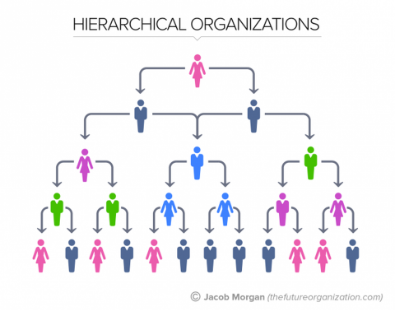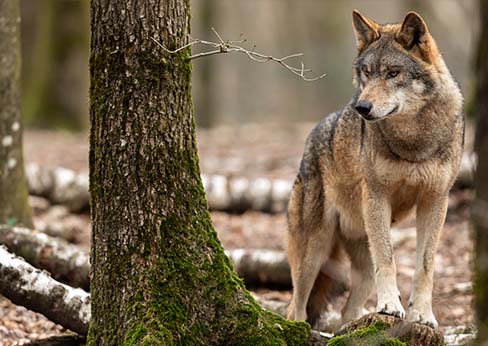In this post:
- Where did the dominance theory come from?
- Do we participate in social hierarchies and dominance behaviors?
- Why did dominance training start?
- If Not Dominance, Then What Do We Use?
In recent years there has been a resurgence in the popularity of dog training methods that espouse “dominance” models of dog behavior. Dominance model training suggests that wolves live in hierarchical packs, with an “alpha wolf” at the top. They believe that dogs evolved from wolves and must live in hierarchical packs and see us (humans) as members of their packs.
But does this method of training work? We think there are better options. In this article, we break down what dominance training exactly is, and its faults.
Where did the dominance theory come from?
Dominance theory assumes that most unwanted behavior such as aggression is due to the dog trying to be ‘dominant’ or trying to be the “alpha dog” in your pack. Therefore, dominance theory trainers believe that to eliminate these unwanted behaviors, the human should assert themselves and establish dominance over their pet.
Contrary to popular thinking, studies of wolves in their natural habitats show that there is no such thing as a physically dominant “alpha wolf”. Instead, they have found that the structure of wolf packs is very similar to a nuclear, human family. There is a male and female wolf who act as co-leaders, and the rest of the pack consists of their offspring. There is little aggression or fights for “dominance.”
Wolves, whether it’s the parents or their cubs, depend on one another to survive in the wild. Wolves that behave aggressively towards each other would endanger the pack’s ability to survive and flourish. While some social hierarchies do exist (just as they do among human families), they are in no way related to aggression.
Do we participate in social hierarchies and dominance behaviors?

Dominance theories make sense to us because we, as human beings, engage in them ourselves. We have hierarchies in families and work situations.
We all answer to a boss, who then answers his boss, and so on.
Even in most relationships, there is a dominant partner who makes most of the decisions.
We project this style of living onto our pets, expecting them to behave the way that we do. The real concern comes from our need to be in control at all times, and not that our dogs are trying to dominate our households.
These are two very different things and should not be confused with each other. If you have the need to be the “pack leader,” do not take that out on your dog in ways like rolling your dog over or pinching him. Instead, take the time to train your dog and establish some ground rules patiently.
Why did dominance training start?
The paper that is usually referred to when talking about dominance was published in Schenkel’s 1947 “Expressions Studies on Wolves.” Then in 1978, the Monks of New Skete popularized the “Alpha-Wolf Roll-Over” (now shortened to the alpha roll). Most people (including some famous TV personalities) attribute their training to the Monk’s training philosophy. The techniques were also popular and frequently used in military settings, to prepare dogs for combat zones.
Fast forward to now, we have a better understanding and more precise means to decode canine behavior. We now know a lot more about the genetic makeup and the relationship between wolves and dogs. They are not the same species and thus don’t participate in the same behaviors and hierarchies within the group.
Pat Miller, CBCC-KA, CPDT-KA, CDBC reminds us that “We are not dogs!” therefore, we should not try to act like dogs – we have built a human/dog relationship that has outlasted the test of time!
Should I worry about dominance in my dog?
“What a lot of this genetic information tells that is that your standard every day more common breeds of dogs like Labradors and Irish setters and pit bulls and none of those breeds are exhibiting dominance. They virtually can’t exhibit it. They don’t have the behavior in their repertoire and don’t exhibit dominance behaviors. Understanding the need to exert dominance, and social structure over limited resources is only found in a few breeds, but with many breeds of dogs, that behavior has been bred out completely.” – Dr. James C. Ha, Ph.D., CAAB
Many trainers out there believe that when a dog places a paw on you or rests their head on you, that they are being the top dog or the alpha dog. Well, this is simply not true. Your dog has no intention to dominate you by placing a paw on you or resting their head on you. It is instead of a form of communication. If you watch dogs playing, you will see them paw and face bump each other to get the other dog’s attention and get them to play. Your dog is doing the same thing with you. He is trying to say “Hey I am right here!” that is all. There are no thoughts (that we know of) of trying to be the alpha dog.
If Not Dominance, Then What Do We Use?
Fortunately, many trainers and behavior professionals now use methods that focus on building a caring and happy relationship with your dog, instead of concentrating only on dominance. Some trainers prefer to use the term “leadership” or other phrases that are less aggressive than “dominance” or “Alpha.”
These trainers have a desire to explain practical, non-confrontational, and humane ways of co-existing successfully with dogs. These scientific approaches aim to strengthen the bond between the owner and the dog. They want to help humans find effective ways to communicate with another species!
For dogs with behavior problems, trainers employ programs such as “Nothing in Life is Free (NILIF)” which works along with the principle that the dog must “do” something to earn what he wants (i.e., sit to get dinner, walk on a loose leash to move forward, etc.). These programs are effective because the dog is issued a structured set of rules that are consistently and gently reinforced. This method allows the dog to learn what he needs to do in order to get the things that he wants, such as food, petting, playtime, etc.
Final thoughts:
If you have any concerns about your dog’s behavior, always consult a certified behavioral consultant or a professional (positive) trainer. We also suggest seeing a veterinarian to rule out any medical issues that could be causing the “unwanted behaviors”.
Special thanks to:

Dr. James C. Ha, Ph.D., CAAB
Dr. James C. Ha, Ph.D., CAAB is a professor of applied animal behavior at the University of WA and a certified applied animal behaviorist with over 30 years of experience in animal behavior teaching, research, consulting, and expert witness services. Aly was privileged enough to be in his Applied Animal Behavior Certification program.

Discovery Wildlife Park
Discovery Wildlife Park is a refuge for orphaned and unwanted wildlife. They provide “forever” homes for animals who are not able to be returned to the wild. It is located on a 90-acre park with over 30 species of orphaned animals. They offer many family fun adventures from visiting the animals in their zoo to camping.

Fort Rickey Children’s Discovery Zoo
The Fort Rickey Discovery Zoo is a special kind of petting zoo with a focus on children and healthy family fun. Everything they do centers on the understanding that, for kids, passive observation of zoo animals is not enough. Children need to be engaged. They need to use all their senses to explore, manipulate, and discover. They strive to provide the highest quality care for our animals while providing the best in healthy, outdoor family entertainment and education.





